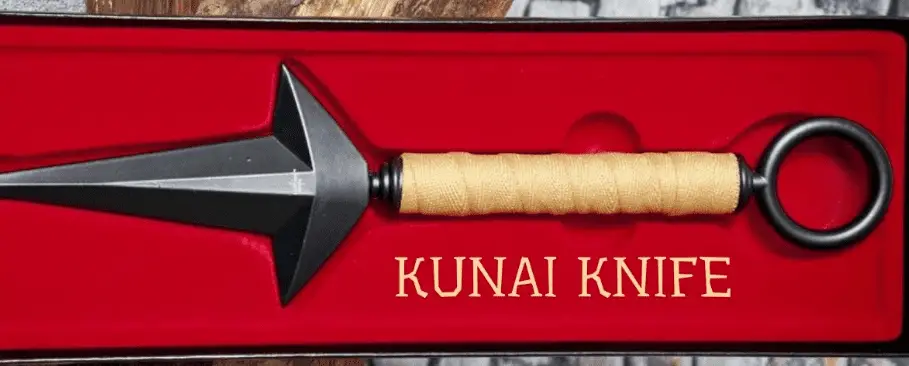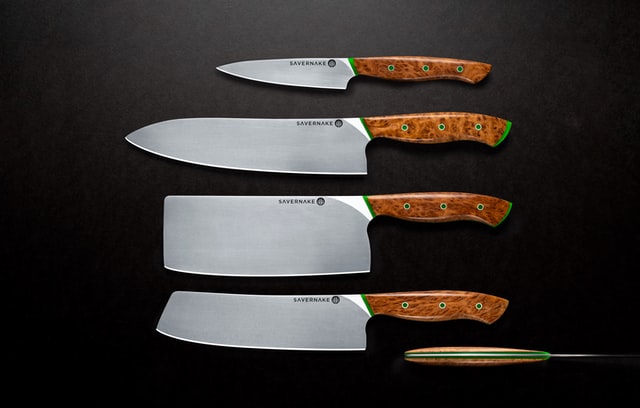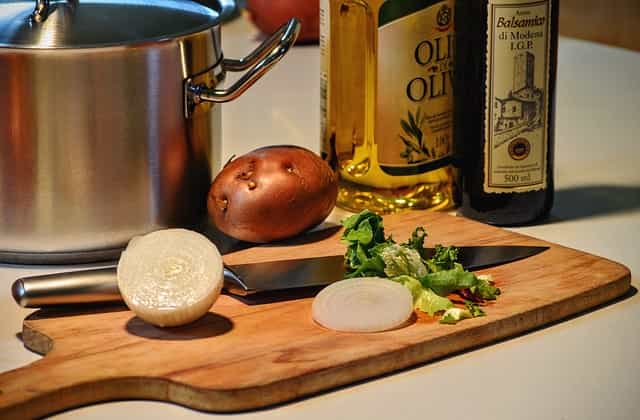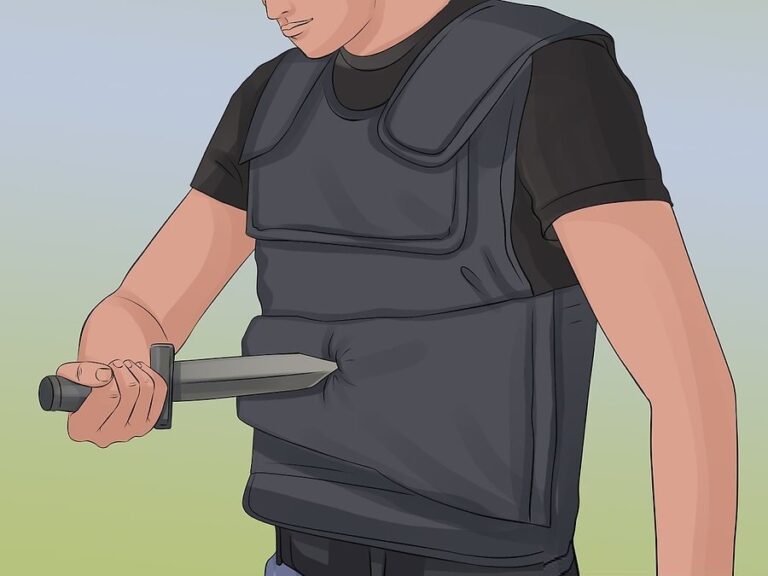There are several knives today of Japanese origin that are still here to stay. Considering that ninjas and samurais came from Japan and they had some of the best, strongest, and most finely made blades ever, it is no surprise that areas such as the Seki City in Japan are known for the blades that come from them.
All of that good knife history brings us to the kunai. So, is the kunai a knife or just another tool that looks like one?
A kunai is a cutting, slicing, piercing, and gardening tool associated with ninjas and martial artists. The design of the kunai comes from the masonry trowel, sharpened on all sides to improve the cutting and stabbing power of the tool. Like a dagger, this is not to be considered a knife.
Table of Contents
So, are Kunai daggers instead?
The kunai bears a lot of semblance to the dagger since they are sharpened on different sides.
Like different kinds of specialty knives, there are large kunais and smaller ones designed to work the same way while giving the user the added advantage of the size where they need it.
However, that is not enough to make the kunai a dagger either.
While they have multiple sharpened ends and will cut, slice, and pierce the same way that a dagger would, it is just a tool that does these things also.
Reasons why the Kunai is not a knife

Simply saying that the kunai is not a knife is not going to cut it, all pun intended.
So, I went into the design, form, factor, and usage of these tools to determine where they differ.
You already know where they are similar, else you won’t be here, so I won’t waste time with that.
Next time you see a kunai and a knife, make sure to remember these:
Primary Purpose
As it is with a machete being a knife, the primary purpose of a knife is to serve as a tool – not as a fighting weapon.
Knives are made for use in the kitchen and to cut the occasional stuff here and there. With time, though, they evolved to become weapons for military usage and self-defense, but that is not the primary use for knives.
Looking at kunais, they are mostly designed to work as a military tool. While they could also find other applications, you won’t meet a kunai that was designed for other purposes than being an agricultural tool or weapon.
Design elements
The blade on a kunai is much thicker than the knife blade.
Towards the base of the kunai, you get something that is squarer in its cross-section, which you don’t have on knives. This makes the blade around that part as thick as it is wide.
For most applications, this will help give more force to the kunai when it is driven into opponents and attackers. The same feature also makes it a suitable agricultural tool – which is one of the purposes (even considered the primary purpose) of this tool.
Dimensions
The average dagger is about 40cm long. The kunai ranges from 20cm to 60cm in size. For knives, you can have them from 5 inches (12.5cm) to 12 inches (30.5cm).
You can even get smaller knives than that for EDC purposes.
The dimensions alone are another good place to establish the differences between these knives and how much they can vary in size.
Cutting Edge
Unless specially designed to have one, the kunai does not have a cutting edge.
There is a point that allows it to get into things but there is the distinct lack of an edge on there. I don’t know about you, but the point of a knife blade is the edge on it – and I don’t see how a kunai would be one if it lacks such a basic addition.
Can I legally carry around a kunai?
Since the kunai is not considered a knife, you might be wondering if you can carry them around with you.
Given that I don’t address this in my FAQ to knife-carrying, I will go in-depth here.
The simple answer is no.
If not for any other reason, here are some things to consider here:
- Length of the blade – as the kunai will most likely be too long to be carried around legally at all.
- Blade type – these are double-edged tools which makes them somewhat illegal in most states already.
- Designation – a kunai is seen by most as a throwing tool, which means it is not just an EDC but a weapon. You could move from breaking the knife-carrying laws to a weapon-carrying misdemeanor, and you don’t want that against your name.
- Blade kind – kunais are fixed blades. There is a reason why I only recommend folding blades for EDC. If you want a fixed blade, look at the Esee 3 vs 4 comparison to pick one of these that you can carry horizontally.
To cap it all off, there are better knives to carry anyway. A region that might allow you to carry a kunai should also allow you to carry a better tool or weapon. Look at this swiss knife vs pocket knife guide to determine which one you’d prefer to go with.
Final Words
Now that you know the kunai is not a knife, you also know what it is and why they are not knives.
If you are a fan of Japanese animes, a collector, or for any other reason, you might want to have these tools also. You can check out this 3-piece Thrower Set or the Wrapped tactical kunai from Snake Eye on Amazon if you want something close to the real deal, or a Cosplay-type large kunai throwing knife for a plastic version.
When you get it, it would be in your best interest to only have it in your home but never to be carried out with you. Do that and you won’t run the chances of getting into any trouble with the law.







![26 Knife Safety Tips for Kids & Adults [+ Infographic]](https://cutsandcarves.com/wp-content/uploads/2021/06/26-Knife-Safety-Tips-for-Kids-Adults-Infographic-768x1024.jpg)
